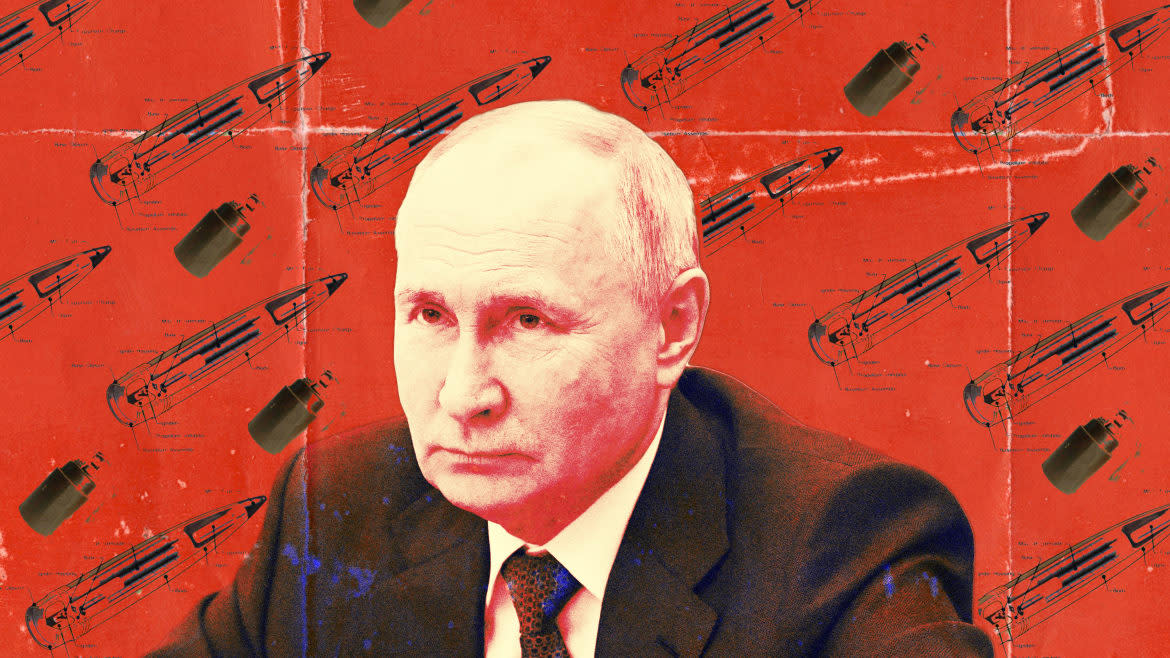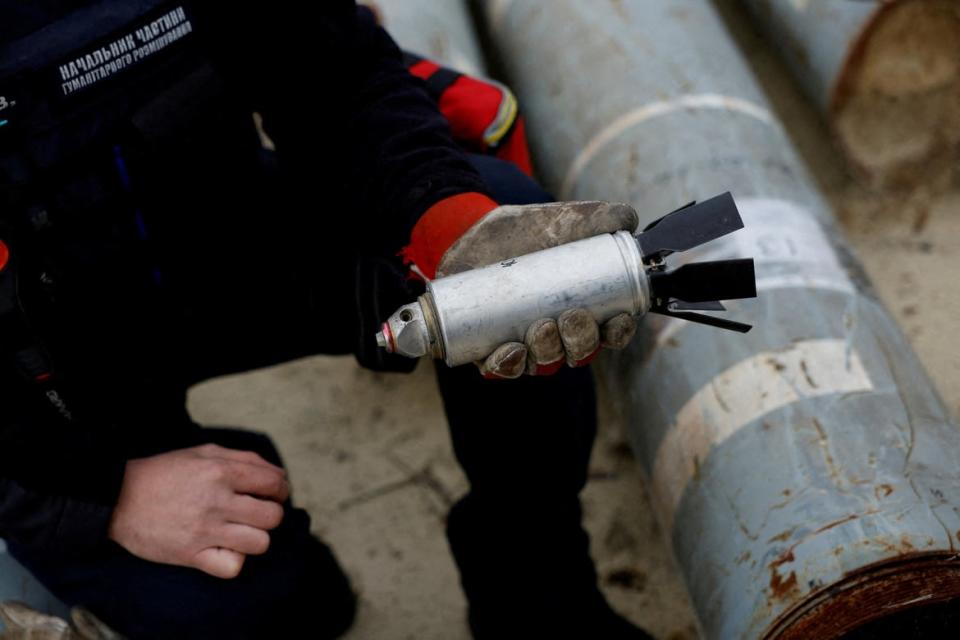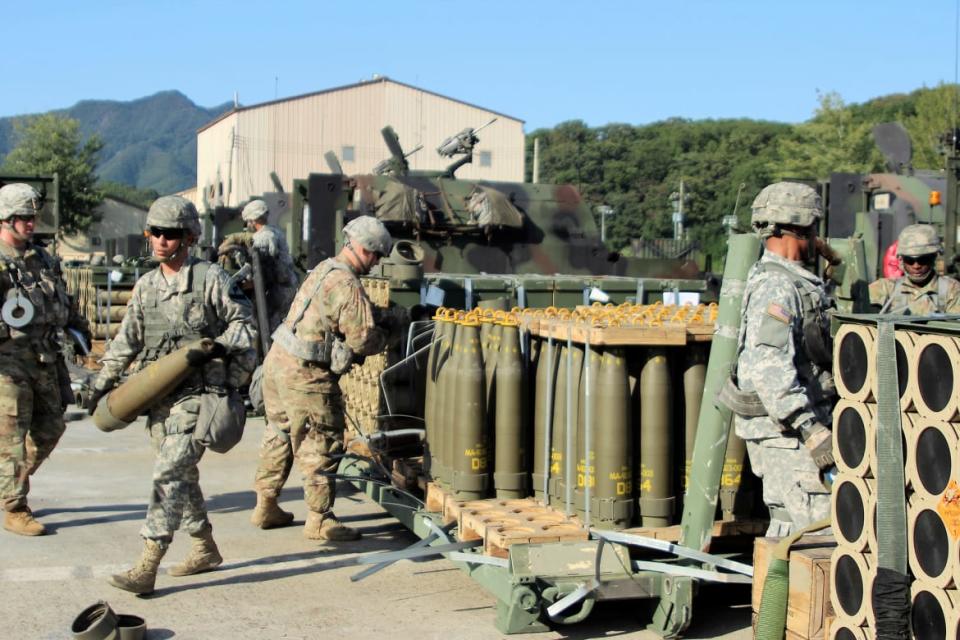Russia’s Chaotic Meltdown Over American Cluster Bombs Begins

- Oops!Something went wrong.Please try again later.
Cluster munitions will be a “game-changer” for Ukrainian efforts to end the Russian invasion. At least, that’s what the Ukrainian Minister of Defense said on Tuesday.
The news was not received as well in Russia. That same day, Russian Minister of Defence Sergei Shoigu threatened to use their own cluster munitions against Ukraine, claiming that they had refrained from using them so far.
Kremlin News Stars Unravel in Post-Mutiny Television Fiasco
“Russia, realizing the threat that such ammunition poses to the civilian population, has refrained and is refraining from using them in a special operation” the minister said on Tuesday. “If the United States supplies cluster munitions to Ukraine, the Russian Armed Forces will be forced to use similar weapons against the Armed Forces of Ukraine as a response.”
Shoigu was not telling the truth. Russia has actually been using cluster munitions since the very beginning of the conflict. Moscow has not held back on its conventional systems, from cluster munitions to thermobaric weapons.
The threats do, however, show how seriously the Russian military is taking the prospect of a Ukrainian military with large stockpiles of cluster munitions—and for good reason.
The Biden administration announced that it would send Ukraine dual-purpose improved conventional munition (DPICM) to help Ukraine’s artillery shortage on July 6. These cluster rounds are artillery shells made up of smaller bomblets that scatter across a wide area and detonate individually. Unlike prior U.S. announcements that it would send Ukraine HIMARs, Patriot missiles, and Abrams tanks, sending cluster munitions stirred up commentators and human rights activists like never before in this conflict. For them, the concern is less about escalating the conflict and more about the perceived danger to civilians and implications for international law.
The arguments for sending cluster munitions are straightforward: the rounds spread bomblets over a wider area than a traditional artillery shell, so Ukrainian gunners need to use fewer rounds to achieve the same effect. Using fewer rounds to the same effect cuts down on demand for ammunition, which Ukraine is short on, and increases the longevity of the artillery pieces themselves, which need replacement and repairs after intense use. As Ukraine is in the middle of a counteroffensive, Kyiv is betting that these weapons will make the fight easier.

Ukrainian military serviceman Igor Ovcharruck holds a defused cluster bomb from an MSLR missile in the region of Kharkiv, Ukraine.
Danger Ahead
The arguments against sending cluster munitions are more varied. Critics usually voice concerns that cluster munitions increase the amount of unexploded ordnance (UXO) in Ukrainian soil, question the legality of their use under international law, and claim their use will provoke a symmetrical Russian escalation.
Unexploded ordnance (UXO) can be a problem for the Ukrainian military now and endanger civilians in the future. Because cluster munitions contain so many sub-munitions, malfunctions could leave intact explosives target areas for years, which could detonate if someone steps on them. Multiple U.S. soldiers have been killed or wounded by stepping on unexploded bomblets over the past decades. UXO, either from cluster or non-cluster munitions, can also threaten civilians for years to come. Proponents of using cluster munitions against Russia don’t dispute the risks of UXO—rather, they see pushing Russia off Ukrainian soil as an absolute priority to end the conflict.
‘Cocky Idiot’: Wagner’s Men Spill Messy Secrets of Russian Mutiny
Because the main objection to clusters is the number of duds, the failure rate for submunitions is a serious point of contention. The U.S. claims it will only send munitions with a two percent dud rate or lower, meaning that significant use will leave numerous unexploded bomblets on the battlefield. Groups like the Red Cross claim that the rate is much higher in reality—well above 10 percent.
Not all cluster munitions have the same failure rate. The dud rate in Ukraine will depend on how the submunitions are constructed and how long they’ve been in storage. UXO seems to be an explicit concern for the Biden administration. When announcing the transfer, Pentagon officials stated that they “would be carefully selecting rounds with lower dud rates, for which we have recent testing data.”

U.S. Army soldiers draw 155mm Base Burn Dual Purpose Improved Conventional Munition (DPICM) rounds to carry into their vehicles during a load exercise at Camp Hovey, South Korea.
To a certain extent, the die is cast. The U.S. already decided to send cluster munitions, and Ukrainians are set on using them to support their counteroffensive. Questions of UXO, friendly casualties and future harm to civilians will depend on how widely they are used, whether cluster manufacturers were honest about their dud rate, and how well Ukraine is able to disarm and remove the massive amount of unexploded ordinance littering the country’s north and east.
Meanwhile, the Kremlin—unable to stymie the delivery of the munitions—has been left to respond using the usual playbook—with lies and showboating.
“It should be noted that Russia is armed with cluster munitions, as they say, for all occasions. At the same time, they are much more effective than American ones, their range is wider and more diverse,” Shoigu said this week, adding that Russian forces are taking “additional measures of an organizational and technical nature to protect personnel and equipment from striking elements of cluster munitions.”
Get the Daily Beast's biggest scoops and scandals delivered right to your inbox. Sign up now.
Stay informed and gain unlimited access to the Daily Beast's unmatched reporting. Subscribe now.

